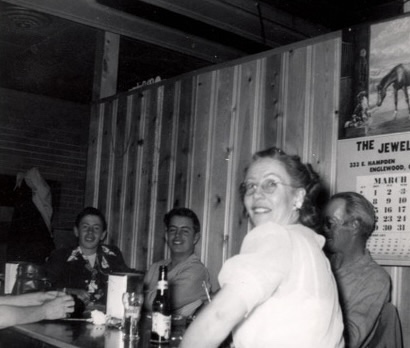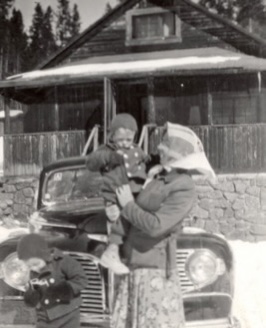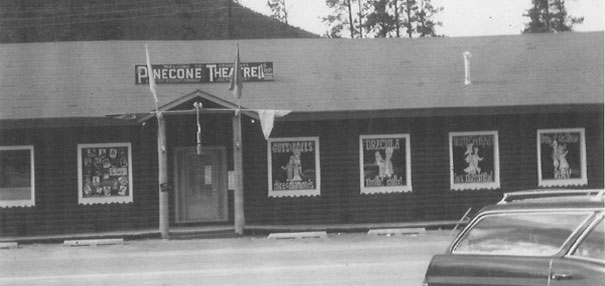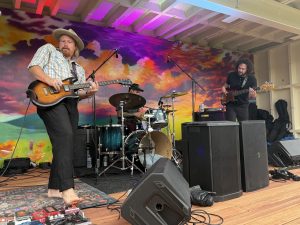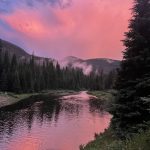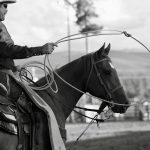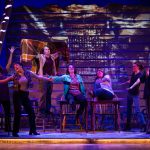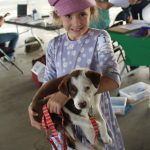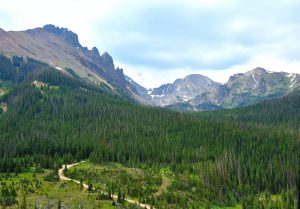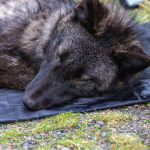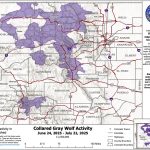Grand history: Meet the family that helped shape Grand Lake’s rich history
The Wescotts are the descendants of Grand Lake's first citizen and postmaster

Michael Wescott/Courtesy photo
Eighty-five year-old Myron Wescott currently resides in Lake Havasu City, Arizona, but says that Grand Lake “is still home to me.”
Although he is too elderly now to visit his hometown, Myron holds fond memories of growing up on the shores of Grand Lake. His family included his father Gerold, mother Clara and younger brother Loren. Myron’s uncles Ralph and Raleigh also lived in Grand Lake.
Myron’s family has a significant tie to the creation of Grand Lake — they are descended from Joseph Wescott, who was Grand Lake’s first, permanent white settler. He built his cabin on the west shore of Grand Lake in 1867, according to Grand County’s website.
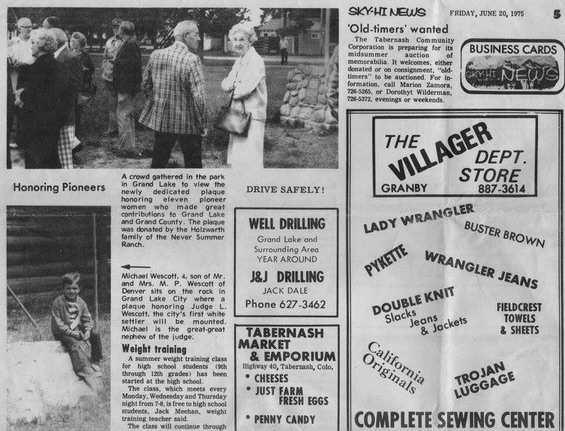
Home beside the lake
Myron was born in Grand Lake in 1938 to a family who made a living in the isolating yet beautiful town.
Myron attended elementary school in the town throughout the 1940s. His old schoolhouse is now the town hall. During that time, families living in Grand Lake had to be self-reliant. The winters were harsh, as many roads weren’t plowed as they are now. Even the main street of Grand Lake didn’t have plows.
“In the spring, the guys would get their Model Ts out and start shoveling, clearing roads,” Myron recalled. “The guys from Granby were clearing the other way to see who could get the most mileage before they met.”
Getting around town during the snowy winter was lots of exercise.
“We used to ski to school. The school had a little ski hill,” he said. “If you wanted to go up there, they’d hire a ski instructor to come up. We skied that and that was PE class.”
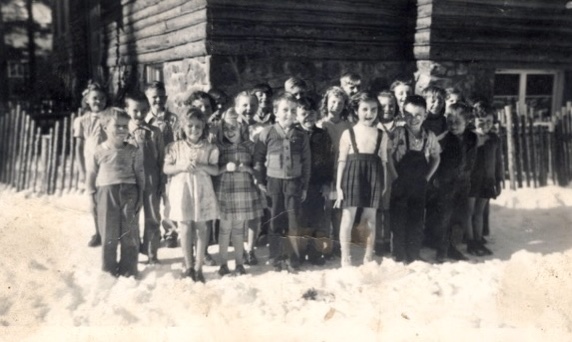
The snow also hindered people from leaving Grand Lake. When Myron’s dad Gerold was young, mail used to be transported by a sled.
“If you needed to go to Granby to catch a train, you would ride the mail sled back down Granby to catch the train to go to Denver,” Myron said.
There weren’t many people living in Grand Lake through these snowy months, similar to today.
“Tourists of course came to visit in the summertime, but in the wintertime, you could fire a cannon down main street most of the time,” he said, recalling the empty storefronts.
To make money in the wintertime and spring as a kid, Myron and his brother had to work hard. They shoveled snow off roofs for people and businesses. This included the old Pine Cone Inn, which once was part of a large dance hall.
“That was our biggest moneymaker there,” he said. “Now, most people wouldn’t let a 12 or 13-year-old kid get up on the on a roof.”
The Pine Cone Inn has undergone many transformations over time, including a number of restaurants, a maze and a theater. Today it is Charlie’s Sports Bar and Grill. Myron has another special connection to the historic building, its fireplace.
The Pine Cone Inn burned down in 1943. When the owners rebuilt, they decided to install a large circular fireplace in the middle of the dance hall. His dad and uncle Ralph built the fireplace that still stands there today, even after the building’s numerous renovations.
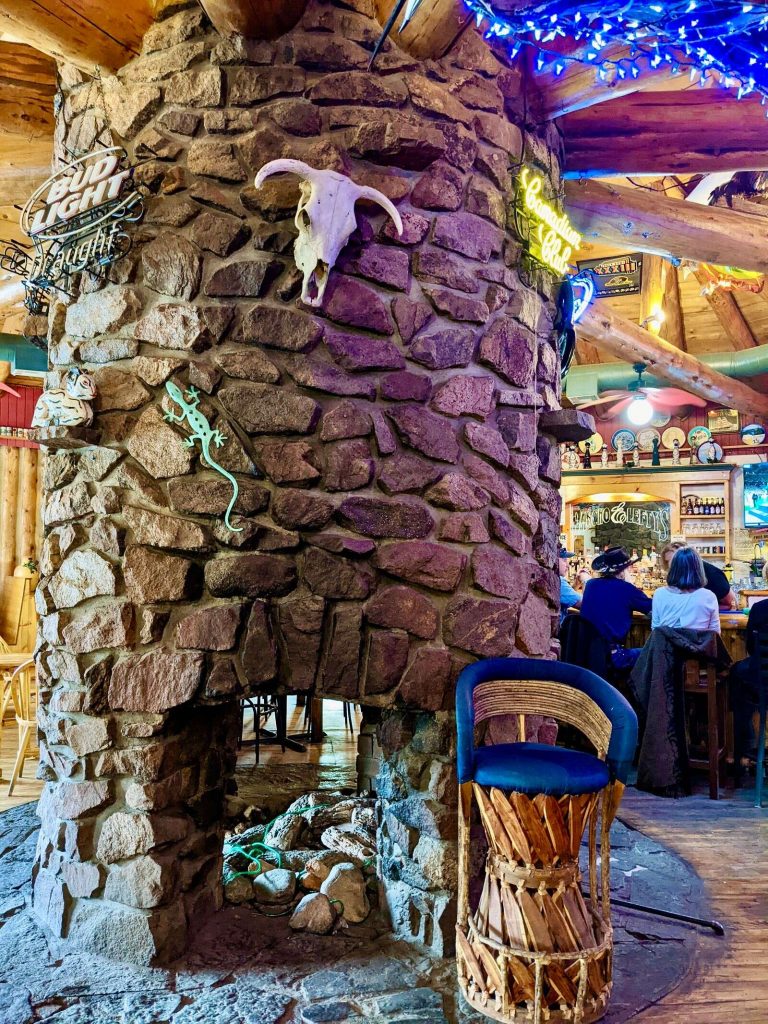
The two men were stonemasons, and they did a lot of masonry work throughout the town. Several of their stonework and fireplaces still exist in original homes and businesses, including the Daven Haven Lodge.
As Myron and his brother grew older, they also helped with the masonry business. Myron attended Middle Park High School and was busy with both school and work.
“We did the masonry work until the cold weather came, then we had a respite,” he said. “When the ice got thick enough on the lake, we’d cut ice for icehouses.”
Before modern refrigeration, icehouses were a necessary part of Grand Lake life. After ice was cut from the lake, it was stored in icehouses and covered in sawdust.
“We were the last guys that harvested the ice off the lake, I think,” he said. “We used to put up like over 20,000 cakes of ice a year.”
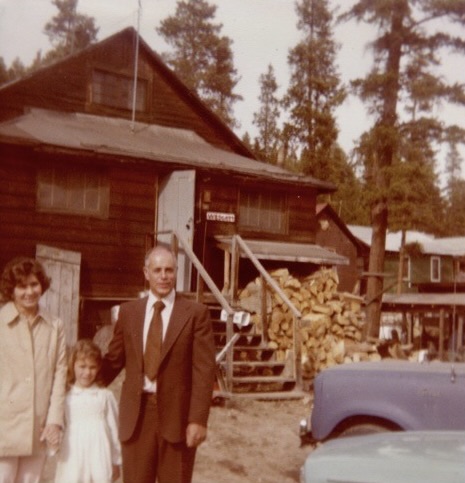
Wildlife abounds
In Grand Lake today, there’s a likely chance you may spot some wildlife. The town is nestled at the west entrance of Rocky Mountain National Park, and still undeveloped enough that animals can make their home there. During Myron’s time, there were even more wildlife than there is now.
Bears often traveled through town and into people’s homes in search of food. Before refrigeration, homes had screen boxes outside of their kitchen windows — bears would sometimes get into those screen boxes. Myron recalled that a bear also raided the trash cans on their home’s enclosed back porch. This became a nightly occurrence for a period.
“The bear knew how to hook that screen door and open it,” he said. “One night I tried to take his picture. When the flashbulb went off, he ran up the hill with the screen door hanging around his neck. But the next night he was back!”
He added that moose were often “a nuisance running around the streets there in the wintertime.” While majestic, moose can also be dangerous. People and dogs had to be careful around the wild animals.
Myron and his family also relied on wild animals for food. Grocery stores were limited in the isolated area.
“The main meat in our diet was deer and elk meat,” he said. “Quite often during the hunting season, you could just walk a little ways from the house and find deer.”
Wescott family history runs deep in Grand Lake
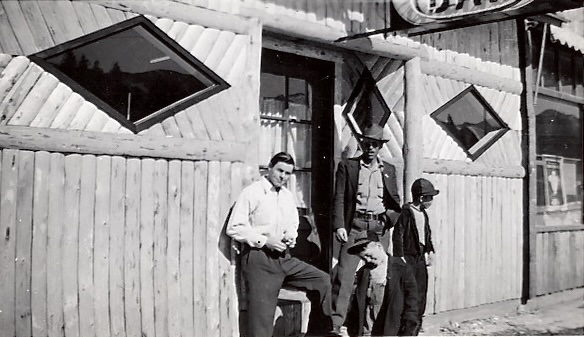
As an adult, Myron eventually left Grand Lake and his job as a stonemason. He moved to Denver, where he became a bricklayer and joined the fire department. Gerold also left Grand Lake after he grew sick and could no longer live at high altitude. Uncle Ralph and Raleigh continued to live in Grand Lake.
Myron said that his father, younger brother Loren, and aunt and uncle are all buried in the Grand Lake cemetery. The family cabin where Myron grew up was sold in the 1990s.
The Wescott’s family history stretches back all the way to 1867, when Joseph Wescott built a cabin on the lake. According to Myron, the cabin still stands and is now used as a shed on private property. Joseph is Myron’s great uncle. The early pioneer made a living fishing off Grand Lake.
“He had fish traps in the water there,” Myron said. “He would smoke the fish and then take them over to Georgetown and sell them to the miners there.”
Joseph eventually became the town’s first postmaster.
“His original homestead was practically the whole western shore,” Myron said. “A lot of it now would be underwater, from Shadow Mountain Lake.”
Myron is old enough to remember when Shadow Mountain was created as a reservoir to store water. In fact, his father helped haul rocks for the massive project.
Although he hasn’t visited Grand Lake in years, Myron still holds fast to his memories of the place, and how his family literally shaped some of the buildings and monuments that still stand today.
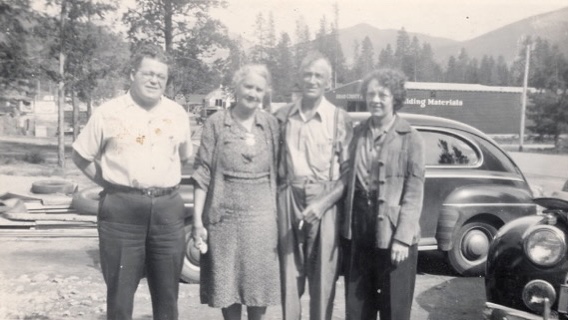
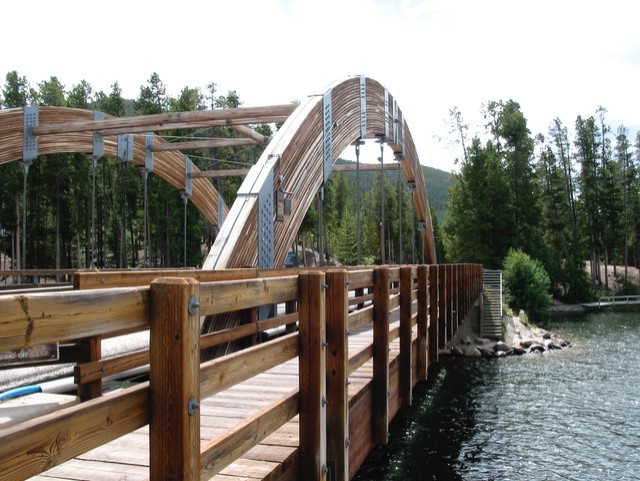

Support Local Journalism

Support Local Journalism
The Sky-Hi News strives to deliver powerful stories that spark emotion and focus on the place we live.
Over the past year, contributions from readers like you helped to fund some of our most important reporting, including coverage of the East Troublesome Fire.
If you value local journalism, consider making a contribution to our newsroom in support of the work we do.


